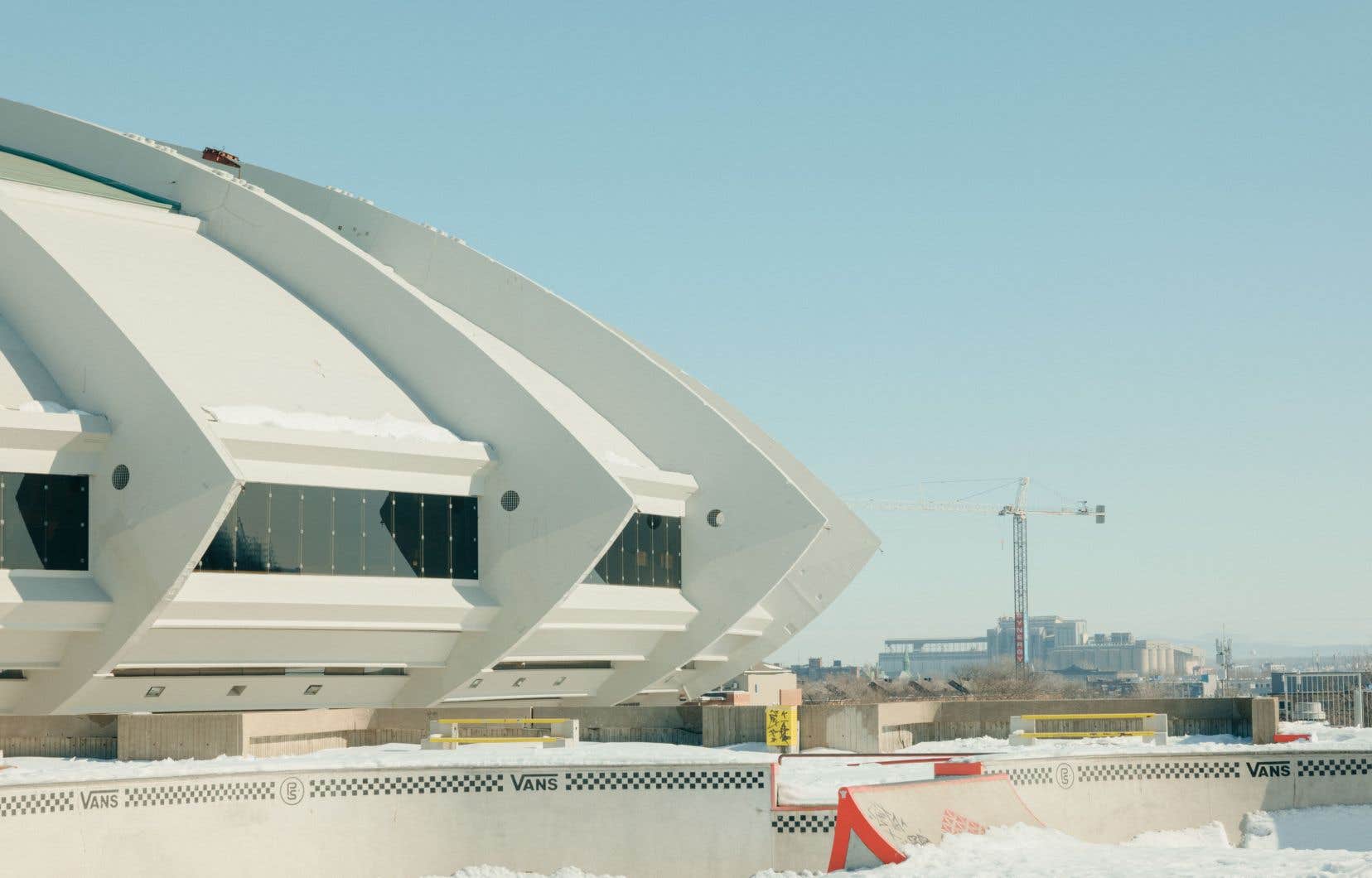The best caricature concentrates, if not the truth, at least a widely shared opinion on beings or things. So, this week, when Quebec announced its intention to spend $870 million to replace the technical ring and roof of the Montreal Olympic Stadium, Quebec cartoonists went all out again to summarize the shared feeling of love- hatred: the “pig tax payer” will therefore pay more, and probably much more than the projected sum, to maintain the white mammoth inherited from the 1976 Olympic Games.
Godin, Duty, completely knocked the monster upside down to give it a permanent home. In the Quebecor dailies, Ygreck planted the infamous orange cone in the Stadium. Aislin, in The Gazette, put all of Mount Royal as a green roof. Chapleau, of The Press, has for its part touched up the subject for the umpteenth time by imagining Taylor Swift in concert inaugurating the finally finished Stadium. She is very old, gets around on a walker…
Chapleau has already transformed the monument into a spaceship (Trek Stadium), into a black hole, and even into a toilet bowl. On June 30, 2010, as the payment of the Olympic debt was coming to an end, he proposed a solution for the future by wrapping the immense concrete structure in a large green garbage bag…
This caricature is found in the doctoral thesis submitted the following year at UQAM in urban and tourism studies by Romain Roult. The title of the very serious work spread over more than 300 pages: Reconversion of Olympic heritage and renovation of urban space: the Olympic Stadium as a vector of development. Unless I am mistaken, he is the only scholar to have studied here at this high academic level the problem of planning and reconversion of Olympic heritage, and in particular of the stadiums, the central and emblematic elements of all the Games.
By comparing Montreal, Barcelona and Sydney, the doctoral thesis made it possible to understand why certain temples of performance have succeeded in their conversion while others have become failures. In this comparative portrait, the “Big O”, as the Anglo-Montrealers call it, abuses its right to disaster a little. The thesis even talks about the quintessential model of post-Olympic failure…
“This paradox between on the one hand the respect and admiration for the building and on the other hand the eternal cynicism about cost overruns and the financial burden of its operation, its use and the completion of its roof, represents a major challenge for the revaluation of this building and these places, Mr. Roult already wrote in his thesis. Thus, for the RIO (Olympic Installations Authority), one of the fundamental issues of these development logics of the Olympic Park and the Stadium is that of reversing the image of this site among the Quebec population, local stakeholders and the all media. »
Therapeutic relentlessness
Has Quebec changed its mind that much? The caricatures, the columns and many comments on social networks gleaned in recent days could suggest that not. A comment heard on the radio basically says that the Stadium deserves medical assistance in dying when instead therapeutic relentlessness is imposed on it…
Renovate or demolish, therefore. Quebec decided again by swearing once again that the monumental equipment would contribute to the revival of eastern Montreal and the international influence of the metropolis. Projections on paper double the economic impact (to 150 million per year) by multiplying by five (from 30 to 150) major festive events, such as concerts or trade fairs.
“I find that it is a decision that is legitimate in relation to what is presented to us,” said in an interview Romain Roult, now professor and director of the Department of Leisure, Culture and Tourism Studies at the University of Quebec at Trois-Rivières. “Of course, I am not an architect, and I am even less involved in the daily management of the Olympic Stadium and the park. But we were told the situation by saying that in the very short term, a crucial decision had to be made. »
He adds that, since the beginning of the 2010s, the Olympic Park has taken “an interesting tangent” by offering shows, professional sport, but also many indoor and outdoor activities for the surrounding neighborhoods. The site has attracted an average of one million spectators per year for the past decade. “Quebec’s decision to renovate rather than deconstruct is in line with the desire to develop the site,” summarizes Professor Raout.
This desire goes back to the report For the Olympic Park. Completion. The future tabled in 2012 by the Advisory Committee on the Future of the Olympic Park. The group of experts was led by Lise Bissonnette, former director of Duty. The idea of relaunching and revitalizing this heritage has been respected since, for example with the addition of the Planetarium, the renovation of the Biodôme and the development of the tower into rental spaces and a belvedere.
Over time, and with these changes, the site acquired an aura worthy of preservation for a large number of people, notes Professor Roult. The debt and even the Olympic failures are far behind us. It is now possible to see in the inherited structure something other than the remnant of old shenanigans in the construction industry. And we have seen other shenanigans, here as elsewhere, and even more shocking. Does Sochi mean anything to you?
“We are not facing a generic stadium with four open-air stands like the Saputo stadium,” says Professor Roult, while recognizing the immense faults of the large patent by the architect Taillibert, ultimately very little designed to accommodate professional sports, soccer, football or baseball. “We are facing a stadium that could be described as iconic, monumental. From a structural point of view alone, it is still a feat. This stadium is unique in the world and therefore requires more thought than most of the very functional stadiums that we see everywhere. »
